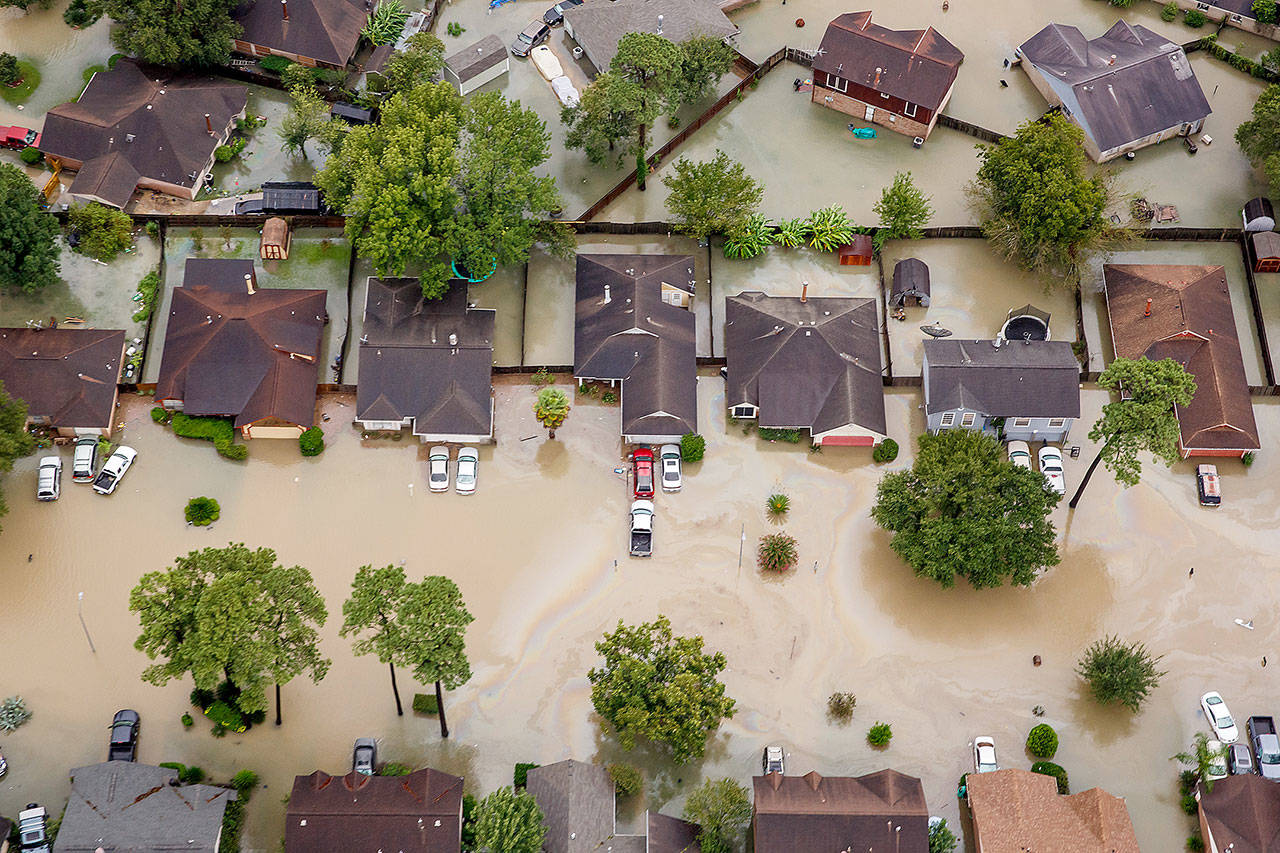By Alex Daugherty and David Smiley
McClatchy Washington Bureau
WASHINGTON, D.C. — For months, political foes like Marco Rubio and Elizabeth Warren united behind a push to overhaul the nation’s flood insurance program by capping annual premium increases and focusing on preventing damage in future floods.
Hurricane Harvey could change all of that.
Congress has spent most of 2017 negotiating the National Flood Insurance Program, which must be renewed by Sept. 30. If the program lapses, thousands of real estate transactions and construction projects in flood-prone areas could be affected. But Hurricane Harvey’s unprecedented flooding in the Houston area changes the debate about the future of flood insurance.
Massive storms like Hurricane Katrina in 2005 and Hurricane Sandy in 2012 led to thousands of expensive claims — and the program plunged further into debt as the federal government continued to provide subsidized flood insurance rates well below market costs.
“Hurricane Harvey is the latest example of why we must act swiftly in reauthorizing and reforming our National Flood Insurance Program,” Rubio said in a statement. “I would vote for a short term extension to prevent the program from lapsing, but I would prefer passage of the SAFE NFIP Act, a bipartisan bill I’ve co-sponsored — that would reform our current system.”
Rubio and other coastal-state politicians are pushing to lower flood insurance premium increases to a maximum of 10 percent per year, a move meant to help their coastal constituents. Currently increases are limited to 18 percent to 25 percent, depending on the property. But experts say meaningful flood insurance reform will involve moving government-subsidized rates set by the Federal Emergency Management Agency to rates that reflect the actual cost of insurance.
That means higher costs for Floridians living in flood-prone areas.
“It offers rates that are really below risk-based rates,” said Laura Lightbody, the project director for flood preparedness with the Pew Charitable Trusts. Lightbody said it will be a “missed opportunity” if Congress simply extends the flood insurance program and keeps rates the same instead of overhauling it.
Lightbody is hopeful that Congress will act because the House and Senate have already been negotiating the program’s renewal for months and the coverage of Hurricane Harvey will draw national attention to the fiscally troubled program.
Daniel Stander, the managing director of Risk Management Solutions, a worldwide catastrophic risk modeling company, said Hurricane Harvey will likely not result in an immediate increase of flood insurance rates but will compound the program’s $23 billion debt situation. However, the hurricane will likely cause FEMA to reassess the program’s cost-effectiveness.
“There is certainly a desire inside FEMA to modernize how the (flood insurance program) is run,” Stander said. Flood insurance rates “are likely to increase but I see that more by movements toward risk-based pricing than by a specific event like Harvey.”
But Florida politicians bristle at the potential for higher rates.
Florida, with more than 1.7 million policies, has 35 percent of the 5 million policies covered by the federal program — three times as many as the second ranked state, Texas, which has 593,000 policies.
Together, Miami-Dade, Broward and Palm Beach counties hold 825,000 policies. The cities of Miami, Miami Beach and Fort Lauderdale hold more policies, 132,000, than the entire state of North Carolina.
Instead of an overhaul, Congress may be forced into simply renewing the program as it stands now. This year, the Federal Emergency Management Agency increased flood insurance premiums by an average of 6.3 percent.
“I think they’re going to try to keep it artificially low for the time being but ultimately I don’t think that’s the long-term course,” said Wayne Pathman, a land-use attorney who works extensively in flood-prone Miami Beach. ” I’ve been saying over the next 10 to 12 years you’ll be seeing major increases.”
The reform legislation championed by Rubio, Warren and Sen. Bill Nelson of Florida, among others, would cap premium increases at 10 percent, helping Florida homeowners but limiting a source of revenue for the beleaguered flood insurance program in a time of need.
Another bill by Wisconsin Republican Rep. Sean Duffy would end the practice of “grandfathering” lower flood insurance rates for properties after FEMA redraws flood zone maps to account for newly discovered risks, likely increasing premiums.
FEMA flood maps in Miami-Dade County are scheduled to be redrawn in 2019.
Over two dozen congressional Republicans, most from coastal districts, balked at Duffy’s proposal. The dissenters included Rep. Carlos Curbelo, R-Fla., who represents large swaths of South Miami-Dade in flood-prone areas.
“We are concerned that the package will make flood insurance unaffordable for our constituents, will stall development and construction, and increase exposure to the Federal Treasury,” a July letter signed by Curbelo and 24 other Republicans to House leadership said.
Rep. Ileana Ros-Lehtinen, R-Fla., who represents low-lying areas of downtown Miami and Miami Beach, urged a flood insurance solution that doesn’t disproportionately affect coastal residents.
“Congress must find a bipartisan solution that ensures the long-term financial stability of the program, but it cannot be done through onerous premium increases that would make housing unaffordable in our community,” Ros-Lehtinen said in a statement. “I am eager to continue working on improving flood maps, advancing mitigation efforts, and strengthening building codes across the nation.”


